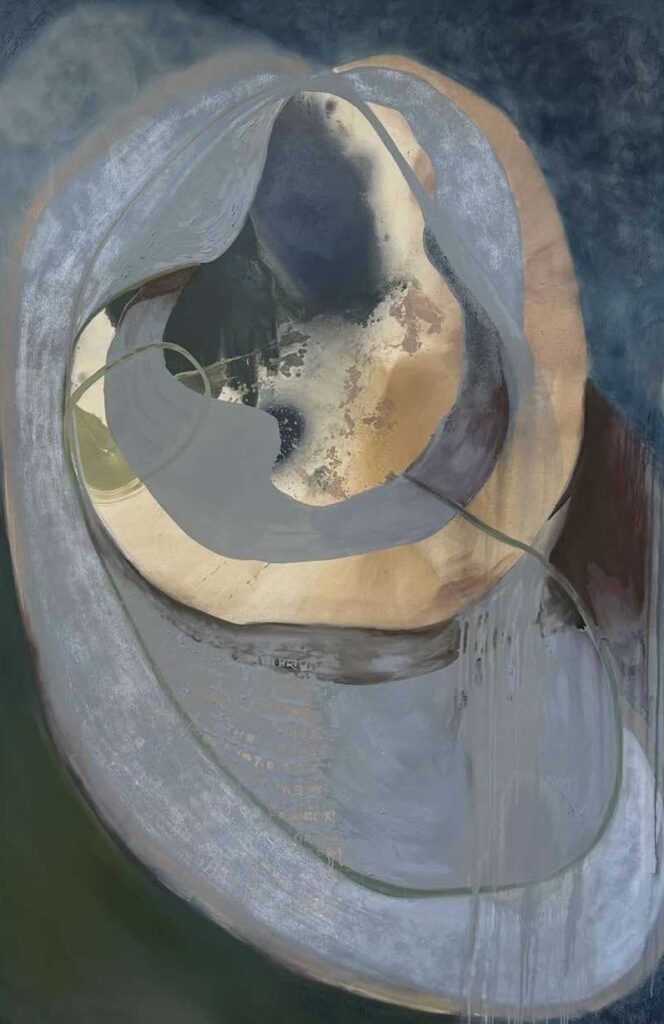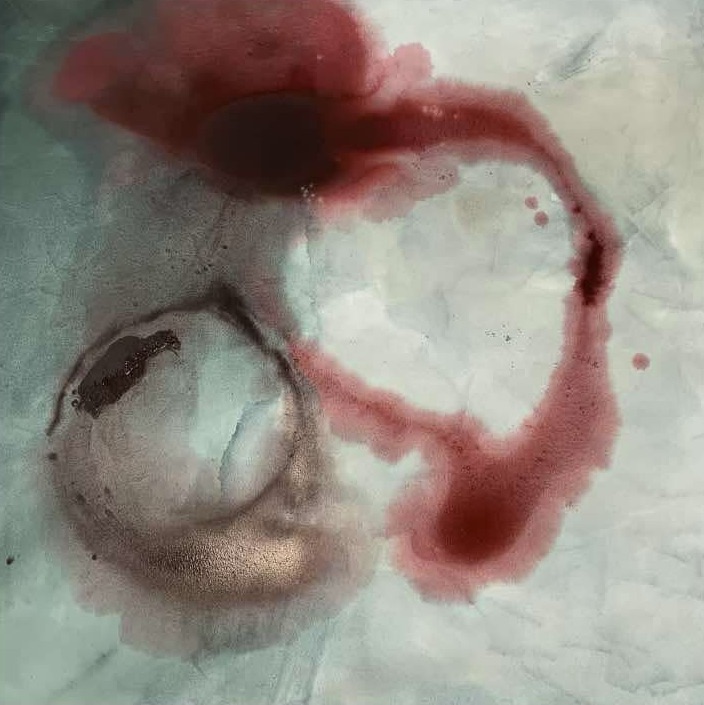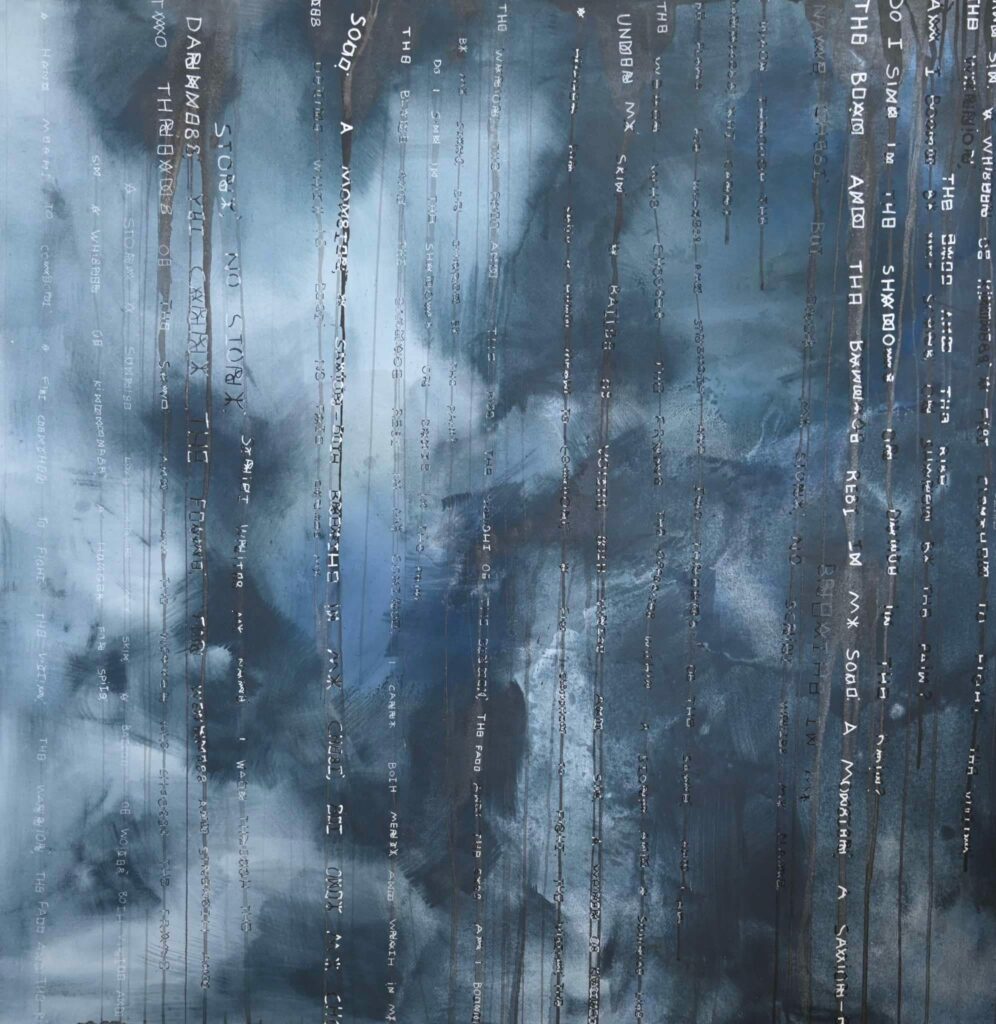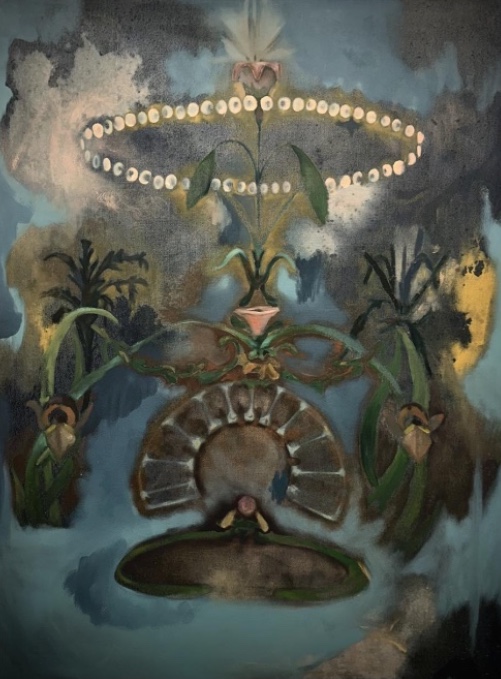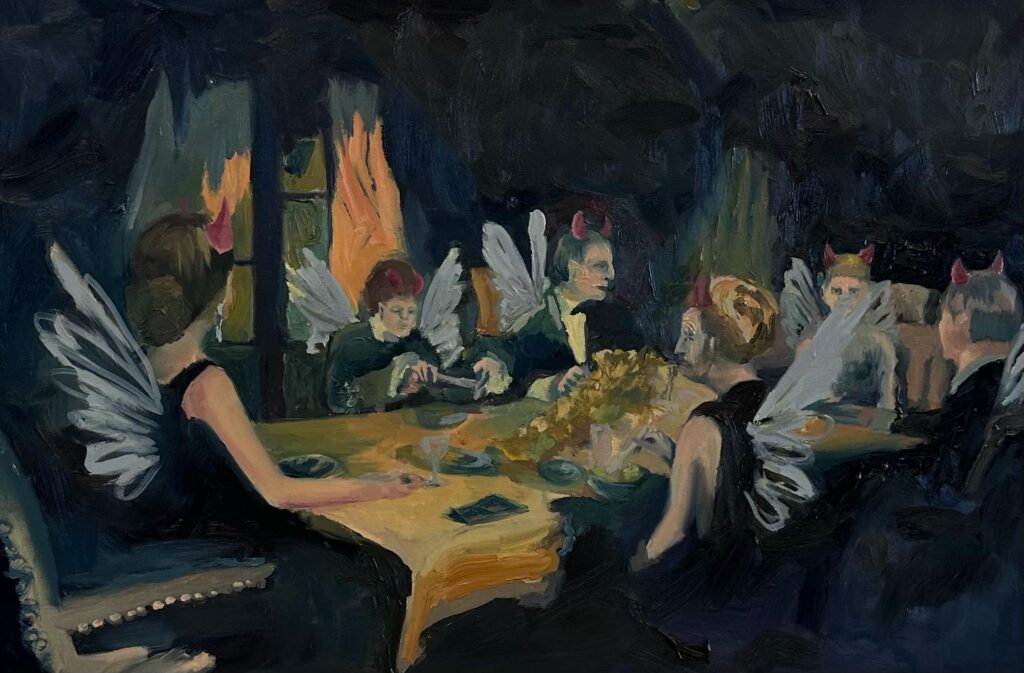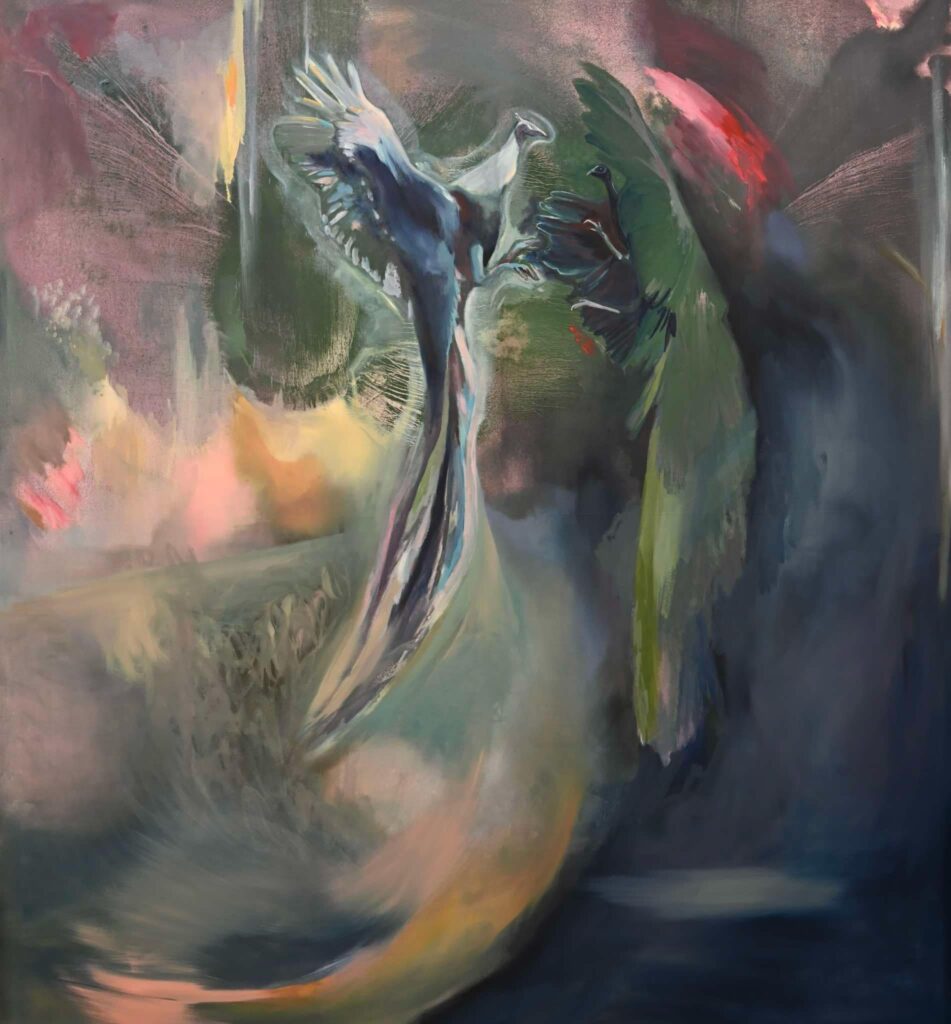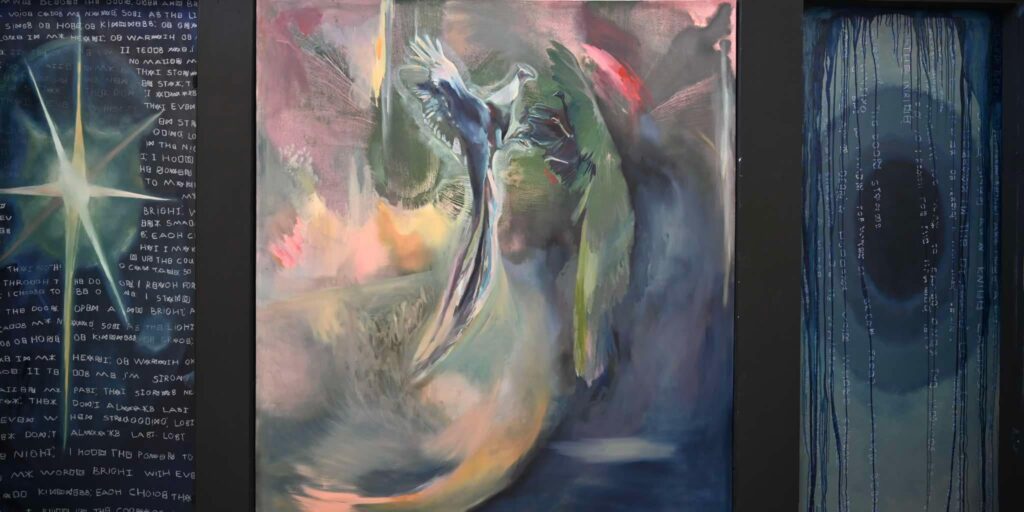Celebrating the work of students graduating from the University of Cumbria Institute of Arts BA (Hons) Fine Art Programme, this multidisciplinary exhibition offers a timely overview of modern Britain.
Manifest in a wildly diverse range of the grotesque, the bogus, the absurd and the fetishistic, these multi-faceted objects offer new perspectives, not simply on the art of today, but on the reified condition of late-capitalist society. As such, this critically conscious exhibition challenges the received orthodoxy of ruling class ways of seeing, knowing and telling.
Martin Fowler | Course Leader
Oliver Allison
Allison’s oil paintings explore the intersection of ancient myth and modern disillusionment, confronting the superficiality of consumer culture and the chaos of late capitalism. Drawing on the Norse myth of Ragnarök—the prophesied end of the world—his work reimagines mythic collapse through the lens of contemporary global crises.
Figures like Sköll and Hati, the wolves who chase the sun and moon, appear as haunting metaphors within fractured landscapes, blurring the boundary between legend and lived experience. Influenced by Sidney Nolan’s Ned Kelly series and Andrei Tarkovsky’s Polaroids, Allison merges historical allegory with painterly abstraction. His work channels the emotional gravity of myth to reflect on climate catastrophe, rising authoritarianism, and the spectre of war—offering both escape and warning.
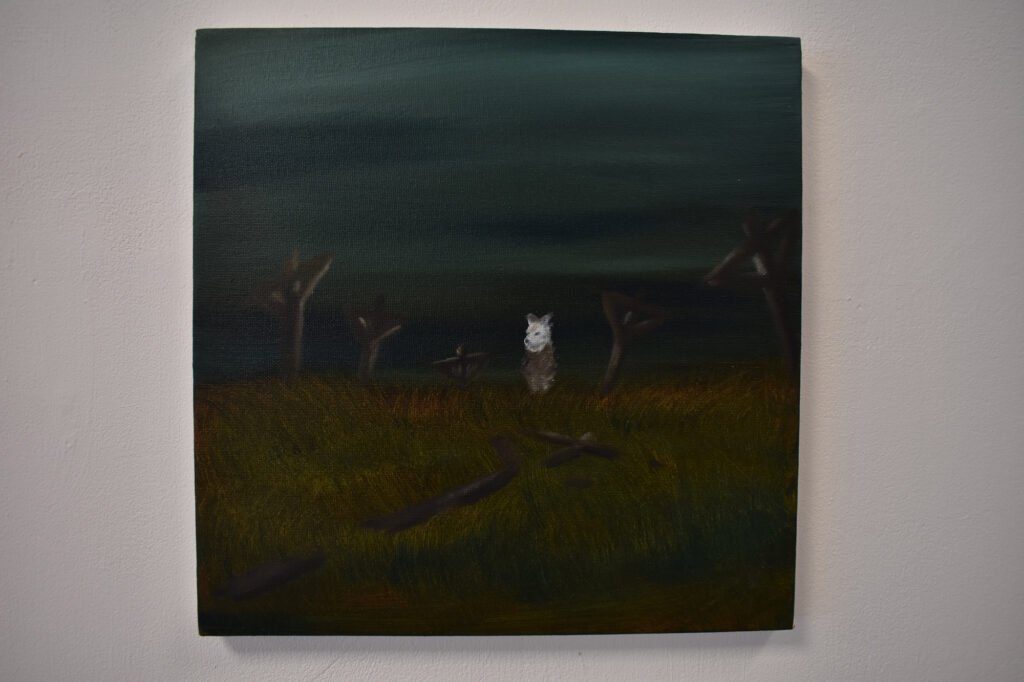
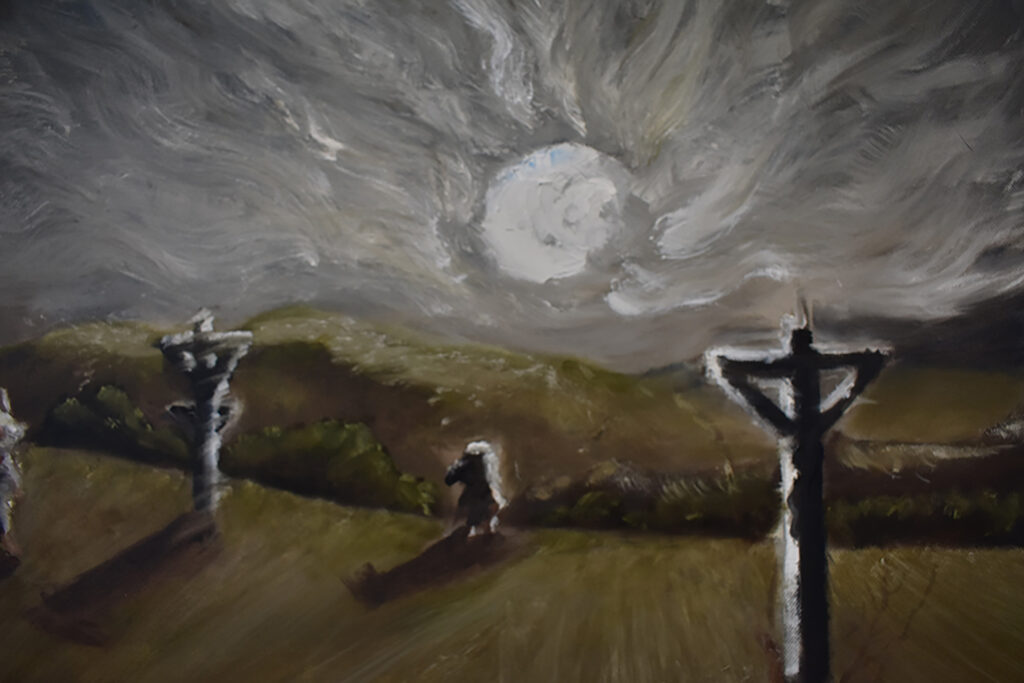
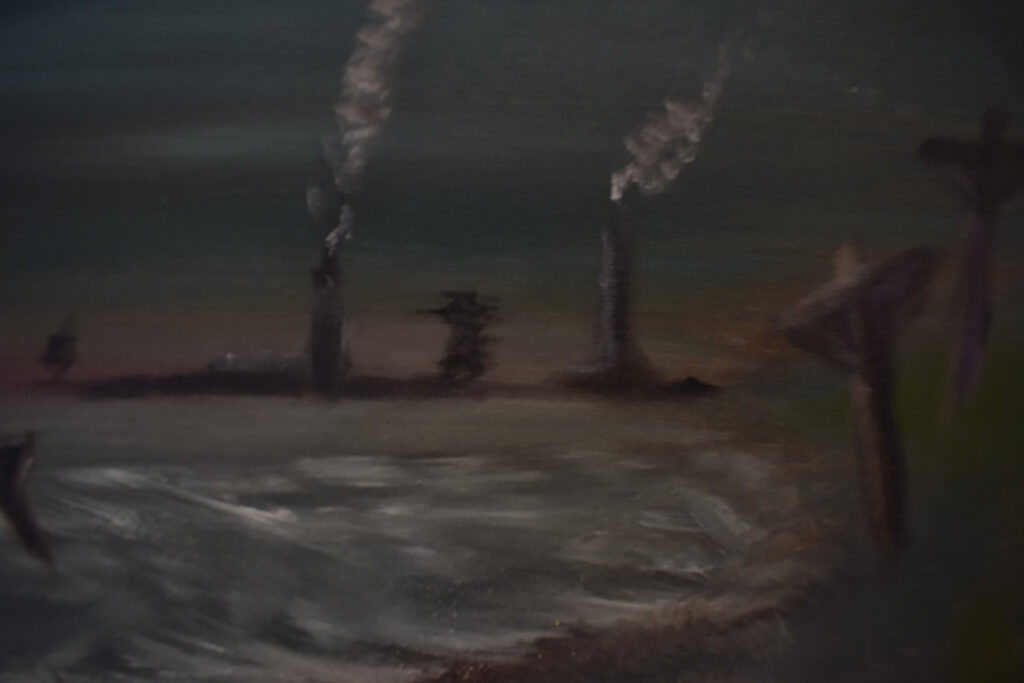
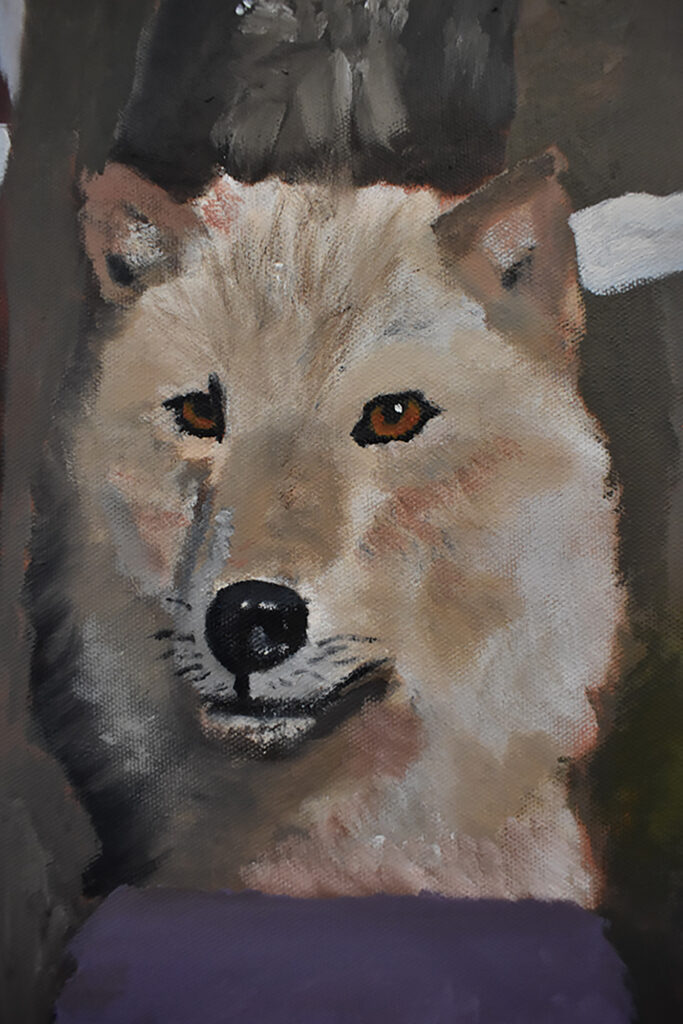
Paul O’Donohoe
Britannia is a conceptually driven, large scale sculptural installation which seeks to highlight the precarity and powerlessness felt by individuals and communities whose lives and futures are shaped by decisions made elsewhere.
Marked by a period of rapid deindustrialisation, outsourcing and the offshoring of manufacturing industries, O’Donohoe’s work engages with issues of social injustice whilst offering a sceptical and mistrustful critique/depiction of political authority and the systematic exploitation, degradation and erasure of working-class people and life; topics rooted in both his personal history and broader social histories. Britannia was initially inspired by Chris Killips The Last Ships project 1975-77.
Influenced by Robert Rauschenberg, Richard Serra, Ed Kienholz, Mike Nelson and Phylidda Barlow, O’Donohoe uses raw, humble, unfinished, found, reclaimed, and repurposed materials to critique the economic and political systems which have brought about the collapse of industrial societies and economies. Influenced by the Arte Povera movement, Britannia seeks to create a space for a more inclusive testimony foregrounding a more honest and authentic expression of materiality and meaning.
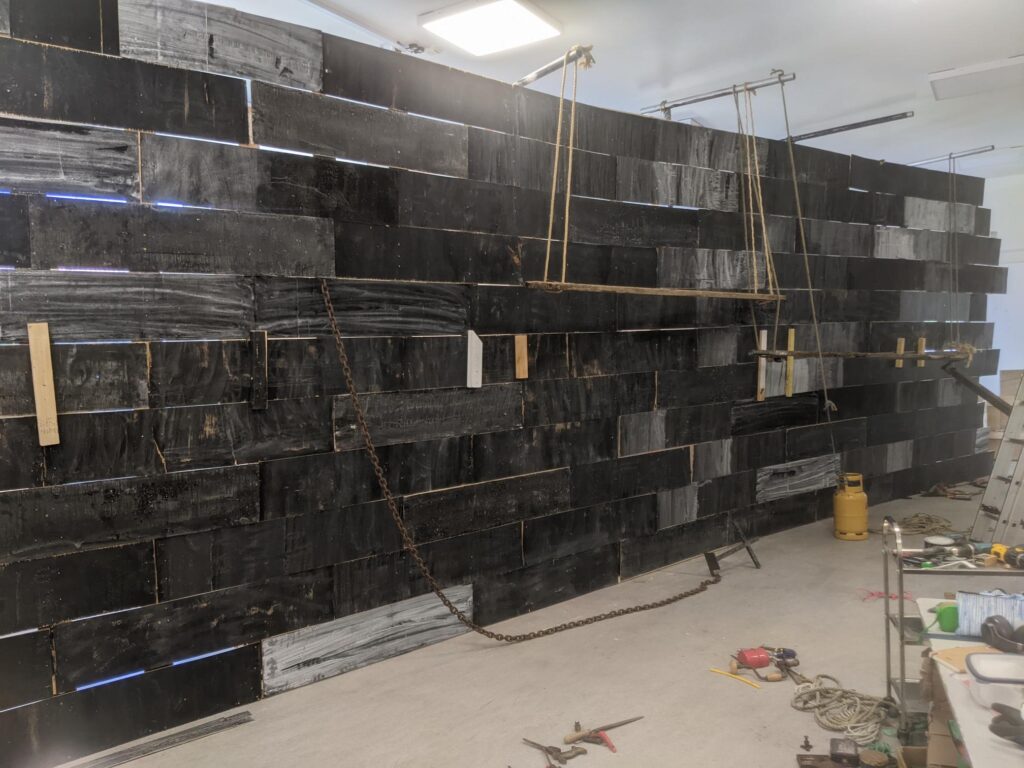
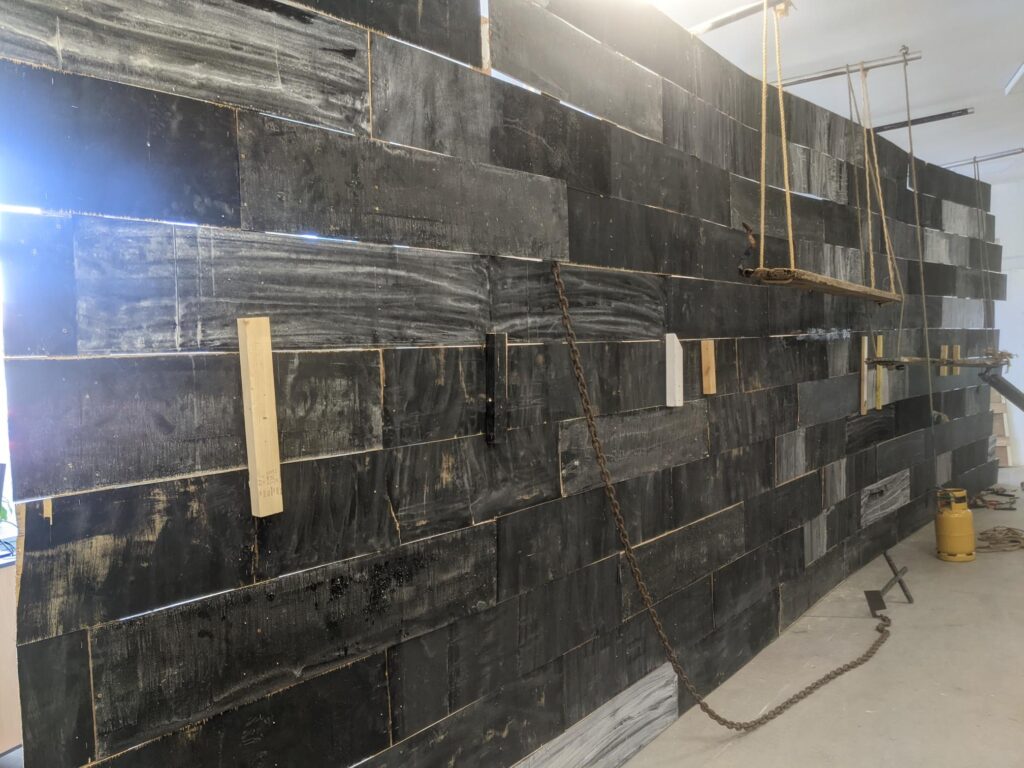
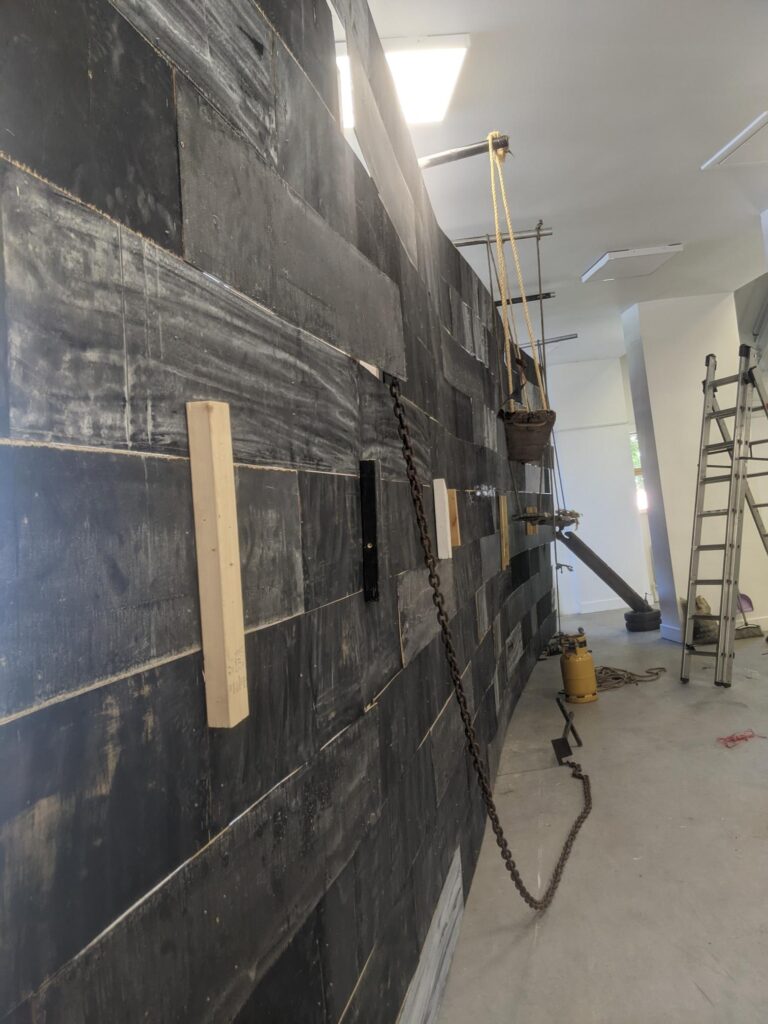
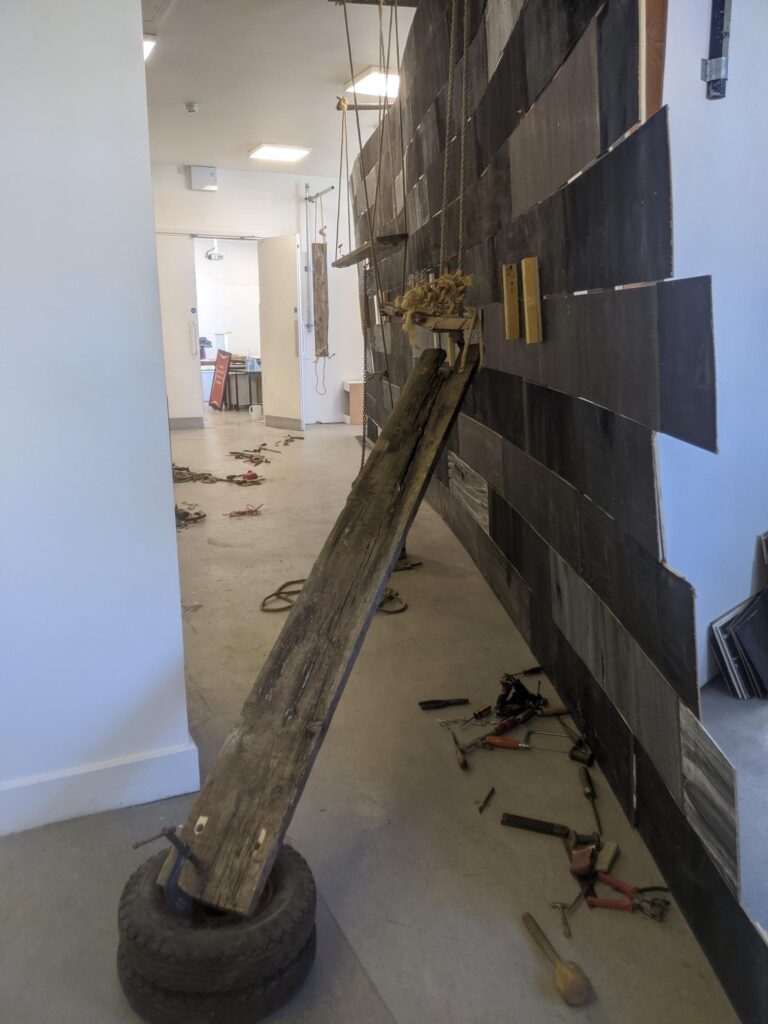
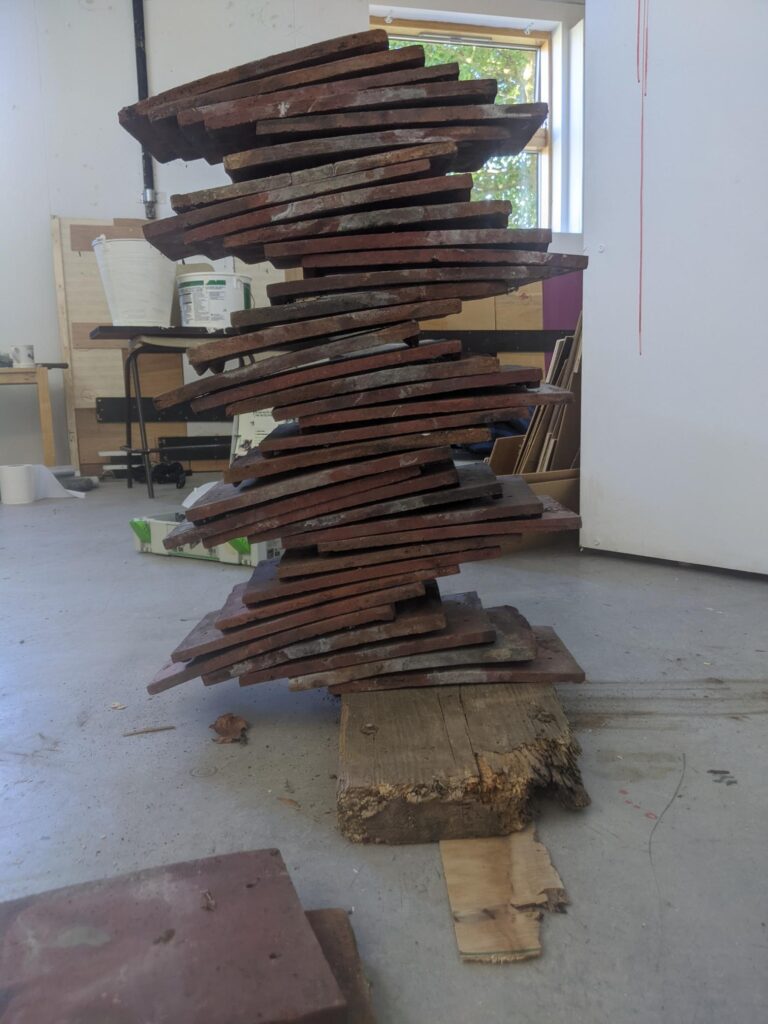
Georgia Fell
Power Play
“Terry, you can’t do that. Hey, they’re giving you the big break of a lifetime” Donald J. Trump (2025)
Fell’s work provides a satirical portrayal of the impact of austerity upon a West Cumbrian community.
Using hand-made masks and video montage, Fell reveals the manic and performative nature of right-wing populism. By performing in these masks in external locations on Cumbria’s deindustrialised coast, she exaggerates the familiarities of liberal discourse, by using the likeness of recognisable right-wing politicians. Fell exposes the hypocrisy and elitism of the political class and ridicules the behaviour of these so-called politicians.
Drawing influence from artists such as Bruce Nauman, Hannah Hoch and Steve Bell, she creates a video montage poking fun at the ruling class, while asking, ‘is this who we want ruling our countries?’.
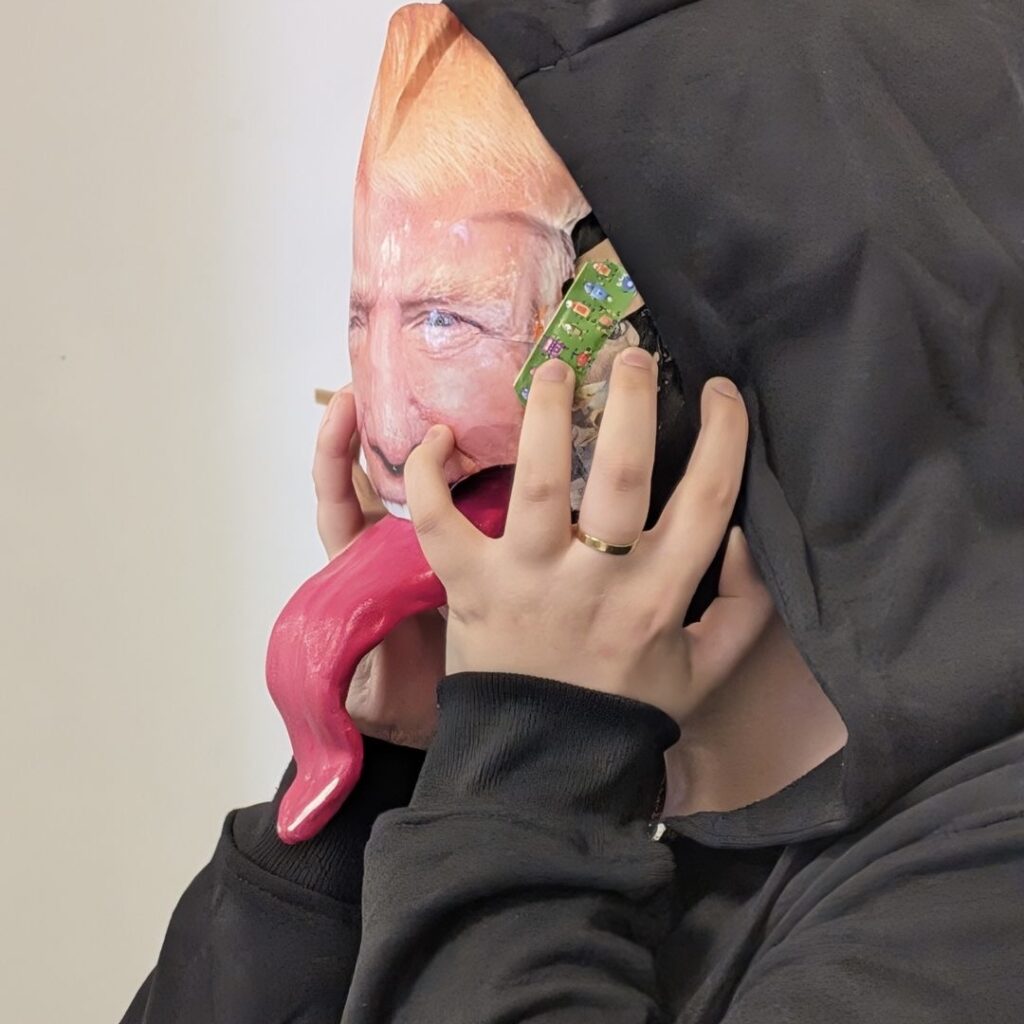
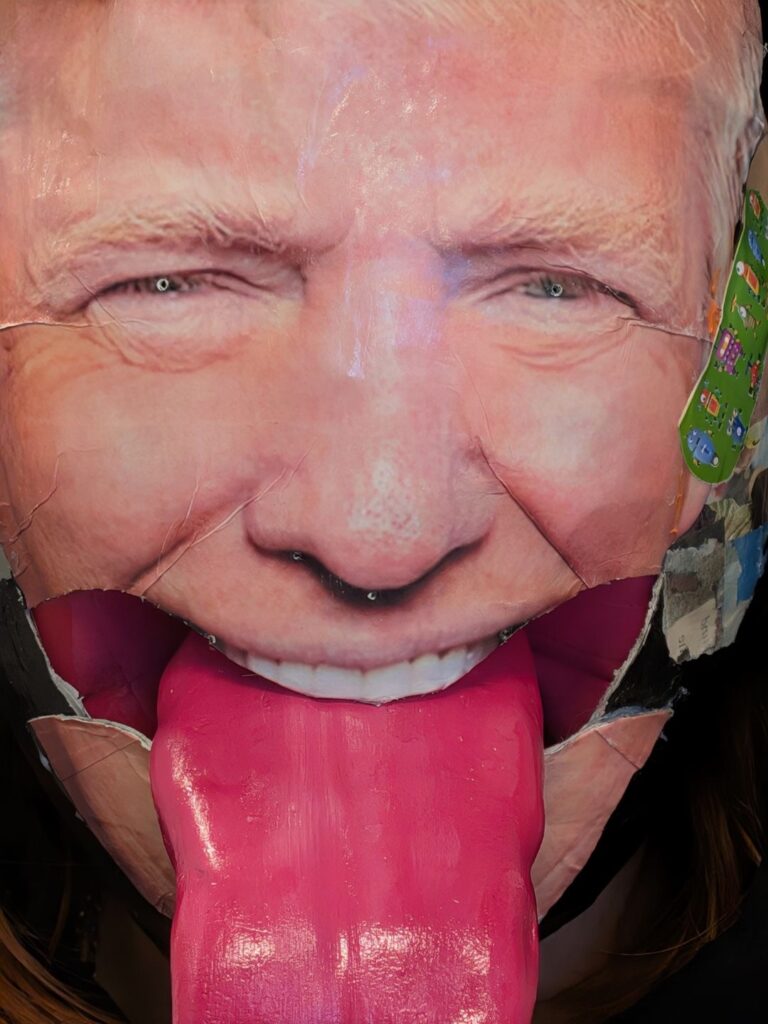
Beata Makan
Beata Makan explores themes of the female gaze, performance, and bodily autonomy through a multi-character video performance that examines the ways femininity is constructed, performed, and perceived. Her work confronts the historical and contemporary sexualisation of the female body by occupying and disrupting the gaze placed upon it.
The video follows three personas: a chaotic, pink-wigged figure who resists categorisation and societal expectations of womanhood; a hyper-feminine blonde who exudes exaggerated confidence and desirability, exposing the artificiality of constructed beauty; and the artist herself, stripped of costume, laughing and simply existing.
Through these shifting embodiments, Makan interrogates identity, vulnerability, and the politics of being looked at.
Drawing on the legacy of performance artists such as Bruce Nauman, the subversive voice of the Guerilla Girls, and the physical experimentation of Butoh, Makan positions the body as both subject and object — a space of resistance, visibility, and reclamation.
Layered with text, sound, and movement, the work invites viewers to question how meaning is imposed on the female form, and what it means to reclaim one’s own image outside of objectification. Her practice becomes an act of quiet defiance — a feminist reclaiming of presence through the language of the body.
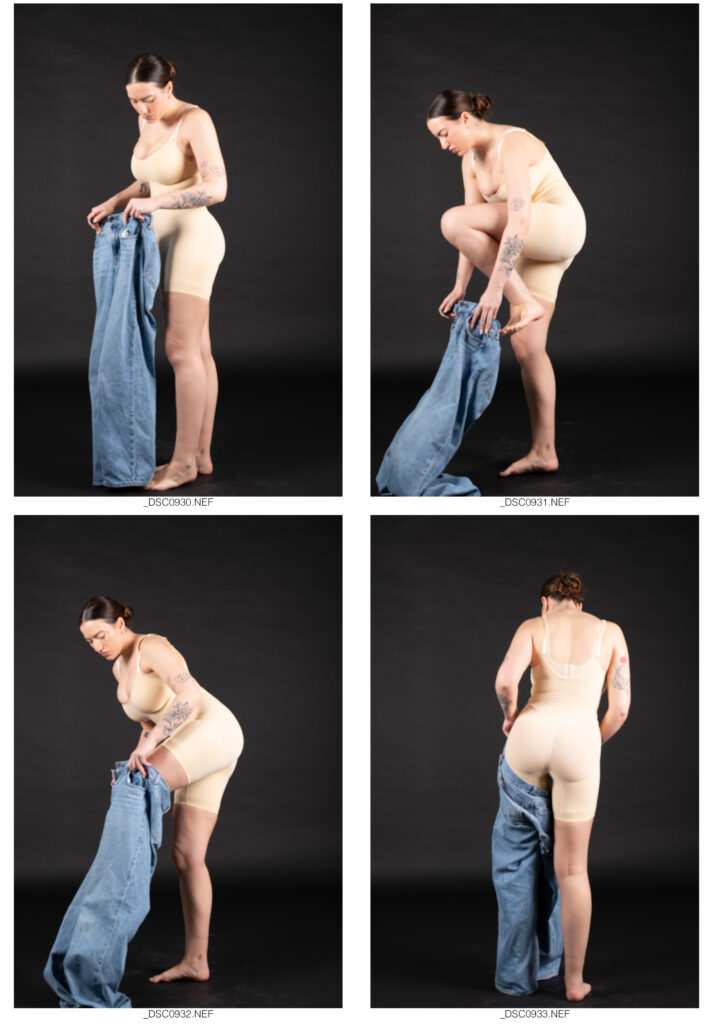

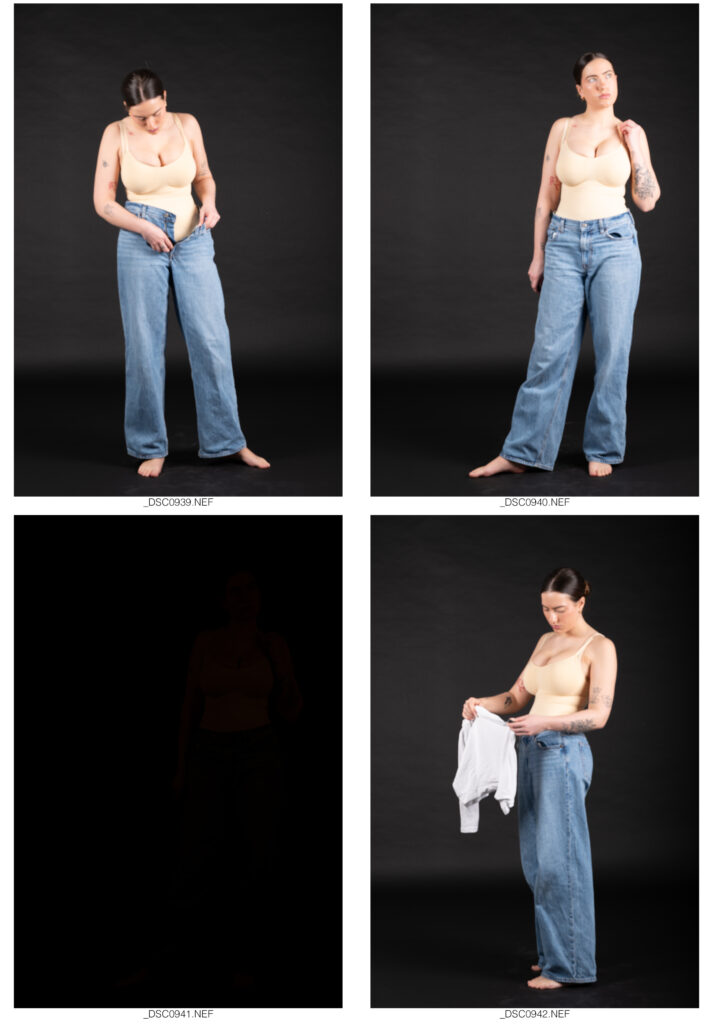
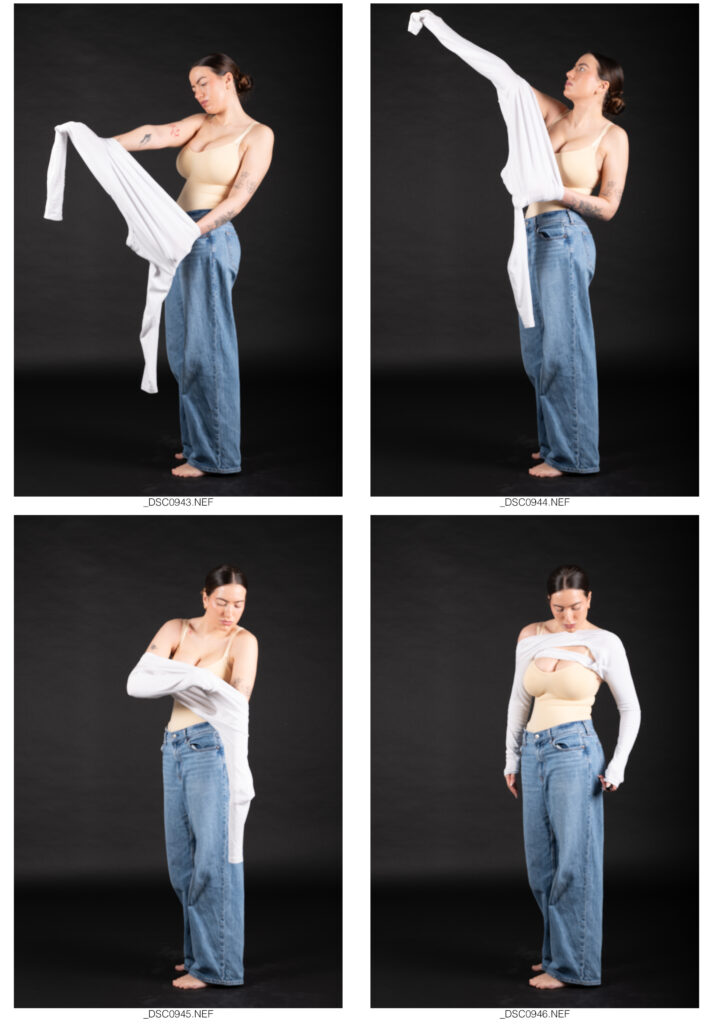
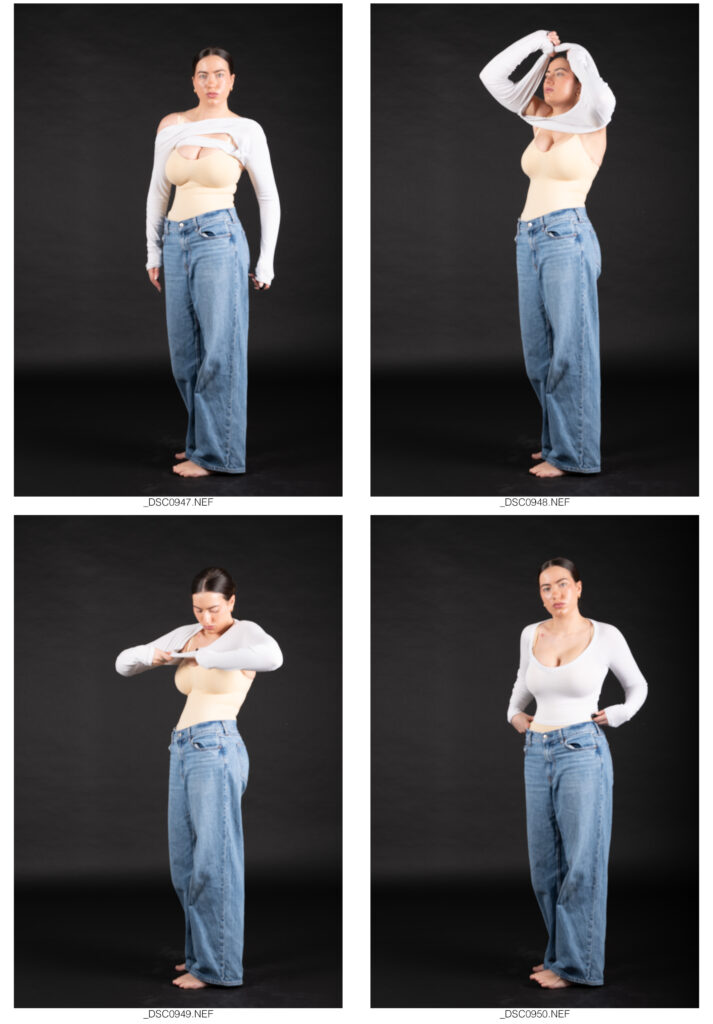
Bryah McGuirk
McGuirk’s work presents a critical view of the continued villainization of women and the alarming growth of misogynistic ideology in society. Addressing the re-emergence of misogyny, McGuirk’s figurative assemblages combine historical and contemporary female figures and anthropomorphic male misogynistic political and media personalities. Through humour she expresses alarm at the growing ‘incel’ culture.
Mediated through social media influencers and right-wing populism, a misogynistic agenda is being promoted through easily accessed online content to target and indoctrinate vulnerable men and boys. McGuirk’s work criticises the attention drawn to this content, its accessibility, promotion and the discrimination, dehumanisation and harassment of women it encourages.
Inspired by the works of Hew Locke’s The Procession (2022) and Michael Landy’s Saint’s Alive (2013). By highlighting the plight of women both historical and contemporary, McGuirk’s figures and animal caricatures critique the rebirth of a misogynistic rhetoric harmful to women and girls.

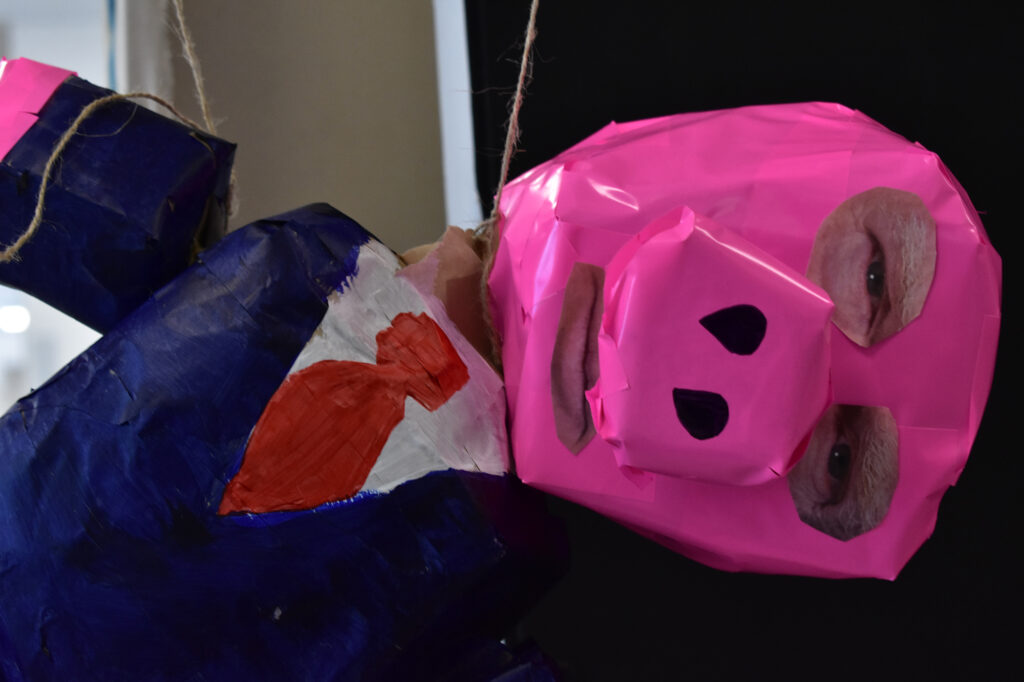
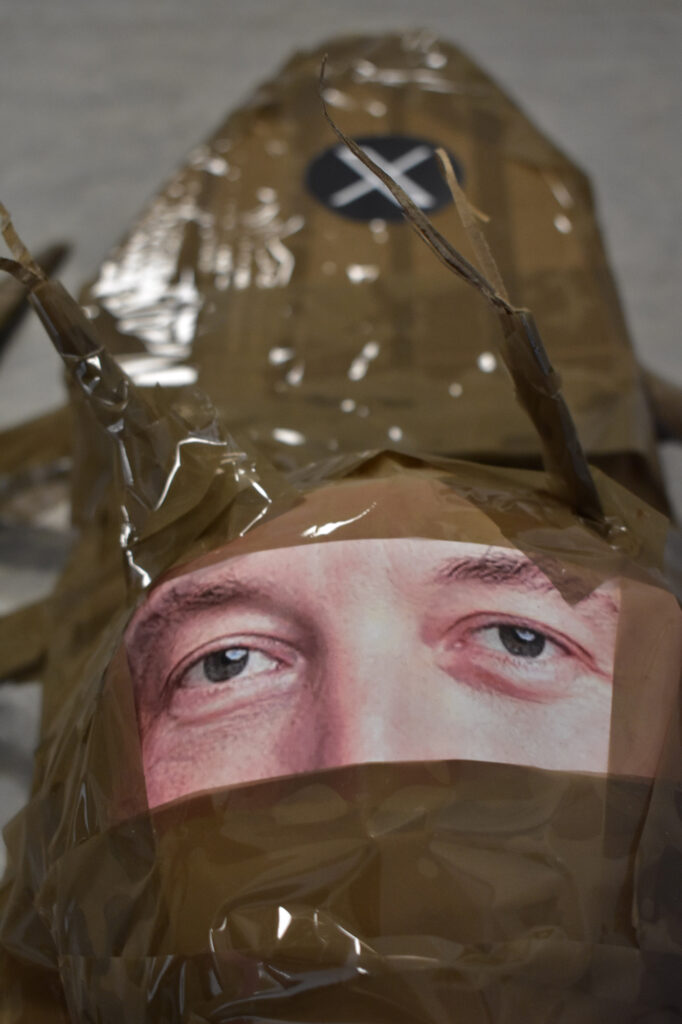
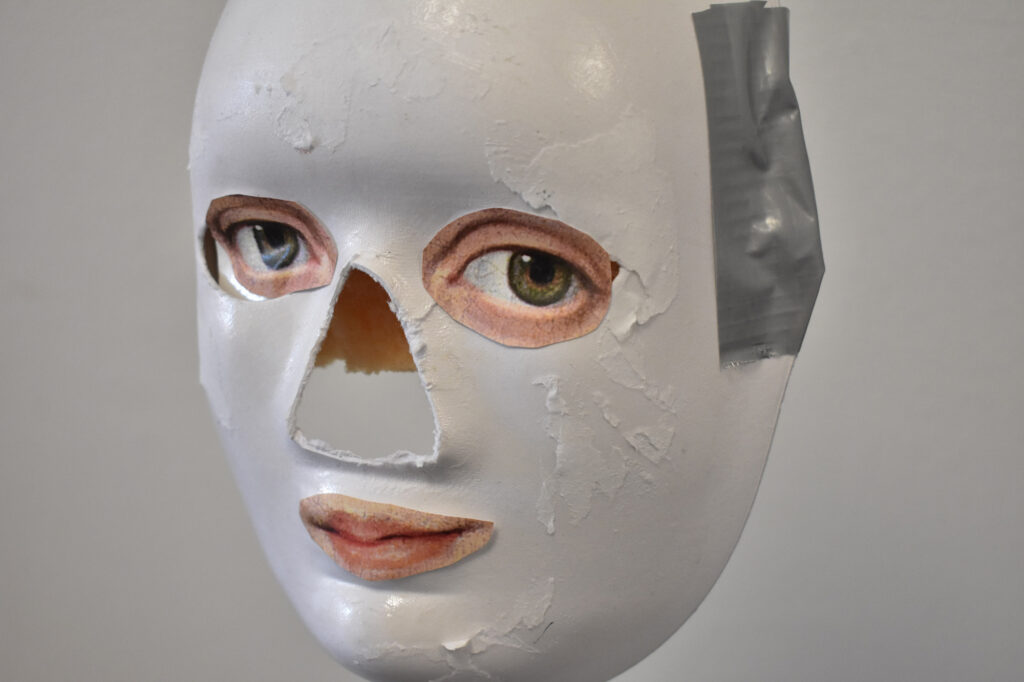

Tegan Rose
Rose’s work focuses on objects that we come across in daily life; using these to portray, in particular, how our experiences with consumerist ideology can be recalled through association. She invites us to reflect on our personal connections to these items and asks, ‘How can we recognise this whilst taking responsibility for the way in which we have engaged with this mindset?’.
She offers you, as the observer, to answer this question for yourself and take part in a shared experience which hopefully allows you to recognise that in today’s society, our thought process is innately concerned with immediate gratification, consuming items to feed our own sense of self-worth.
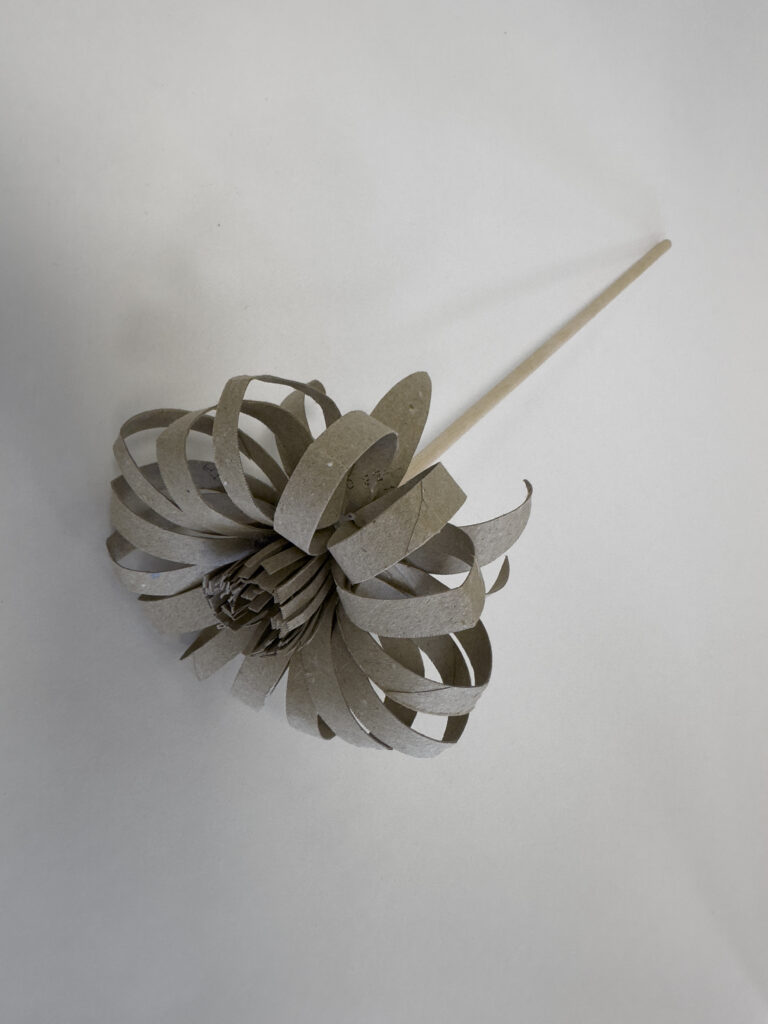
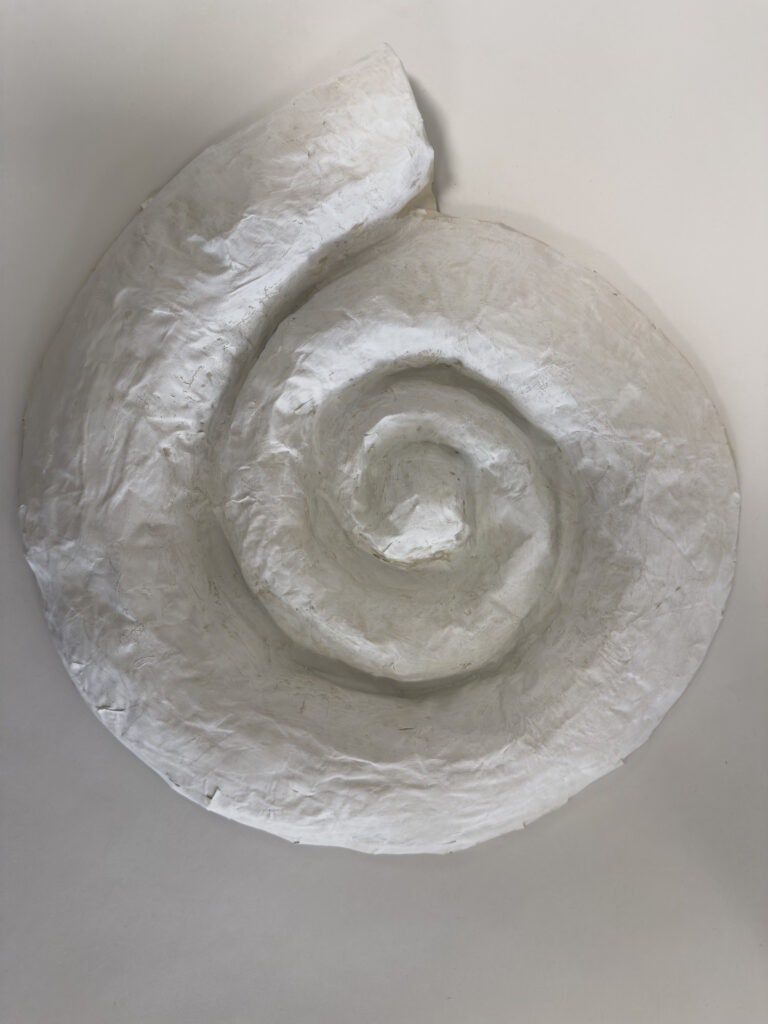
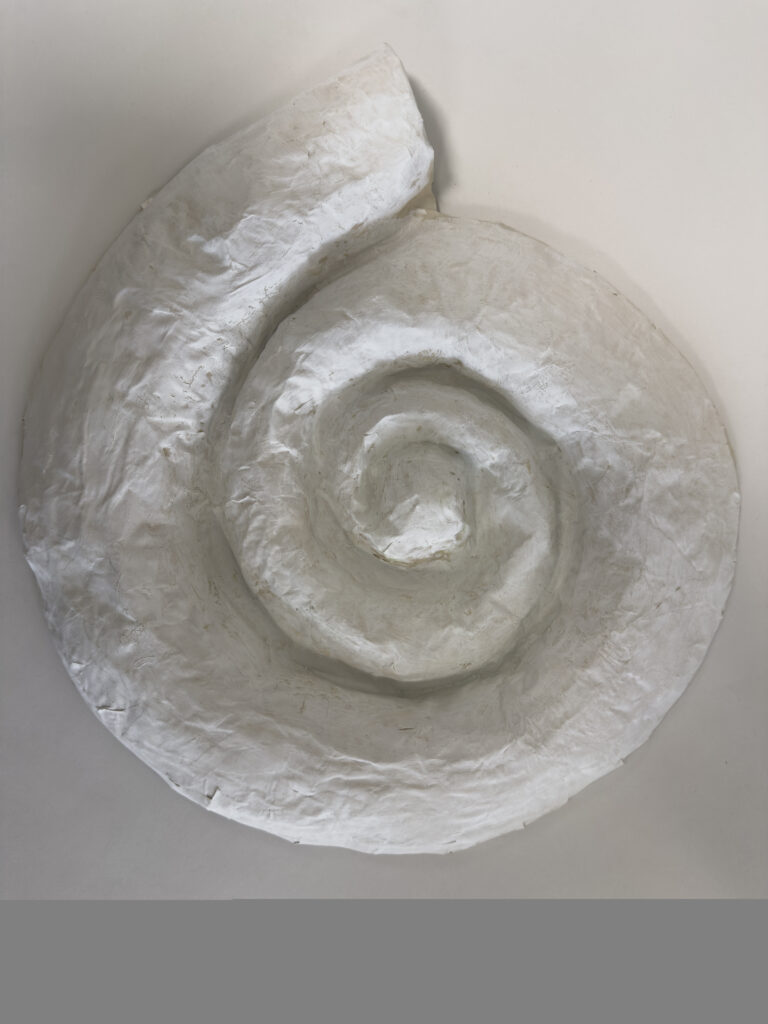
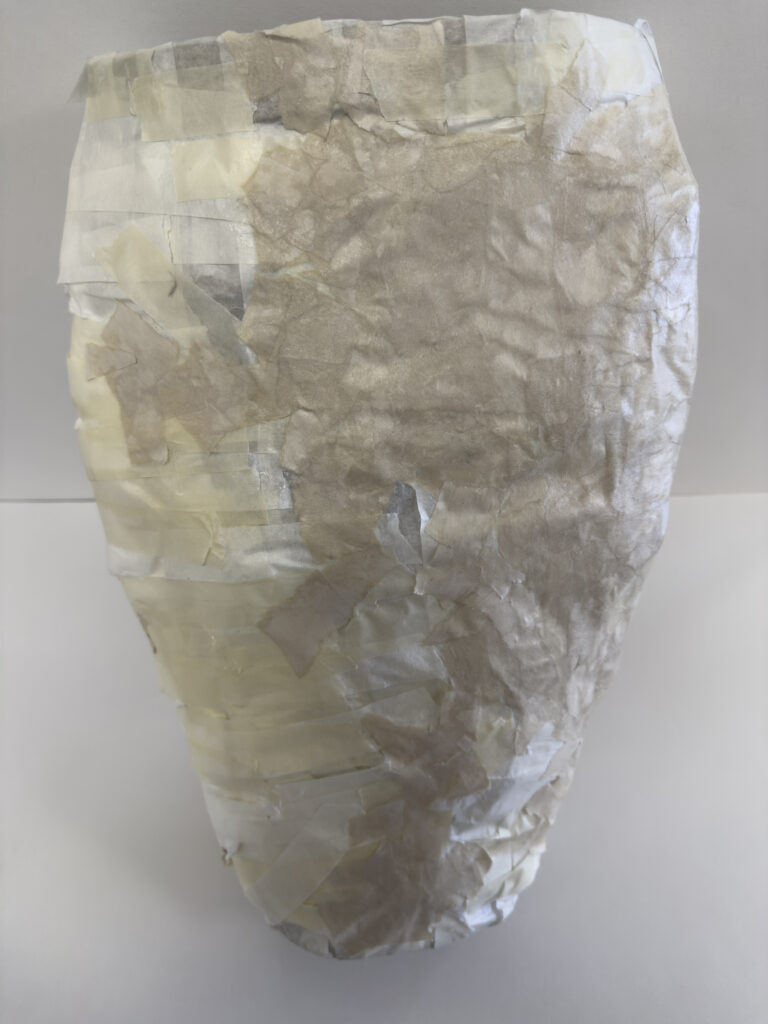

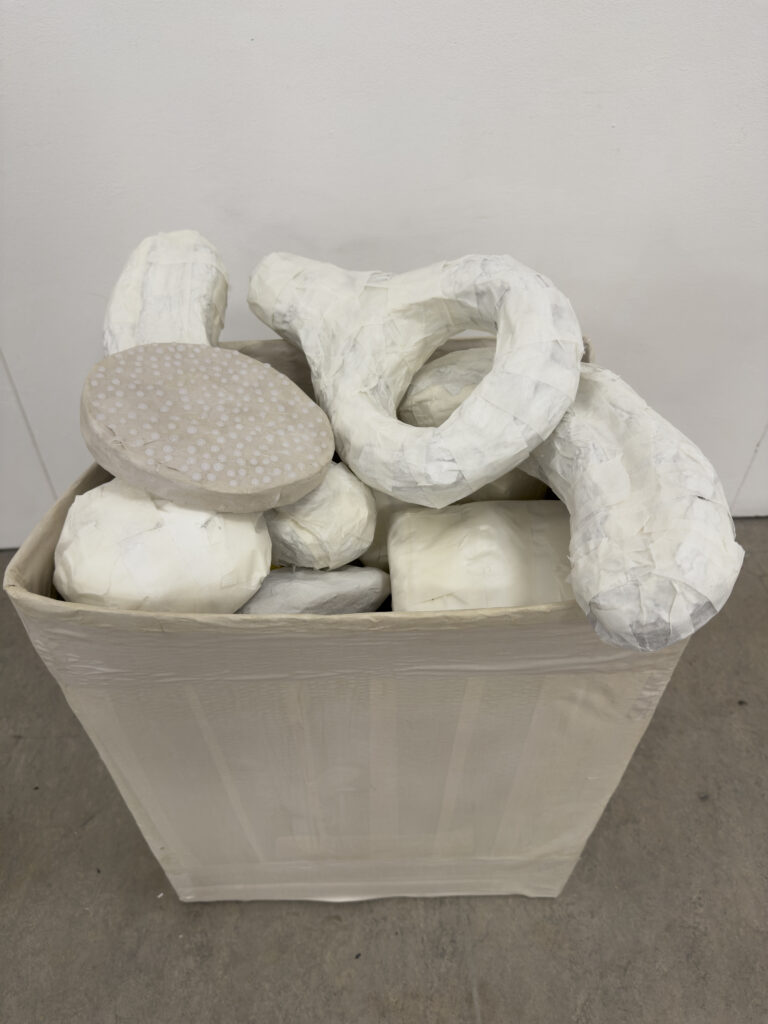
Kaja Trotter
Trotter’s multidisciplinary painting explores contrast—light and dark, strength and vulnerability, order and chaos—to disrupt familiar conventions and question mainstream narratives. Grounded in her lived experience as a neurodivergent artist, her work is rich with symbolism: peacocks, devils, atmospheric colour, and fragmented inscriptions that resist easy interpretation.
At its core is The Self and The Mask, a large-scale oil painting where two peacocks—one black, one white—are locked in suspended conflict. It reflects the tension of internal duality: a constant negotiation between clarity and confusion, dominance and surrender.
The Opposites Within echoes this emotional terrain. A poem embedded within its surface offers a visual response—difficult to read, yet deeply felt.
In Enhance My Darlings 1 and 2, Trotter preserves marks from earlier works, embracing imperfection and process. These abstract pieces continue her exploration of emotional complexity, inviting the viewer to dwell within contradiction—not to resolve it, but to feel it fully.
